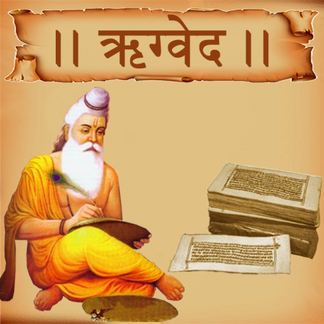|
Cosmology & Chemistry in Rig Veda The Vedas are regarded as the store house of ancient knowledge obtained through direct vision of reality by the Vedic seers. Mahrishi Veda Vayas compiled the Vedas around 5000 years ago. Prior to that, Vedas were transmitted through teacher-disciple tradition. Upon investigating, the Vedas reveal the discoveries made by the modern science. It is true that the verses of Vedas are symbolic in nature and require high level of intelligence and interpretation. Rigveda Samhita is a collection of 1,028 hymns (suktas) in about 10,600 verses, organized into ten books (mandalas). The Rig Vedic hymns are dedicated to various deities, chief of whom is Indra. The others discussed are Vrtra, Agni, Soma, ,Adityas, Mitra, Varuna, Ushas (the dawn), Savitr, Vishnu, Rudra, Pushan, Brihaspati or Brahmanaspati, Prithivi, Surya (Sun), Vayu or Vata (the wind), Apas (the waters), Parjanya (the thunder and rain), Vac (the word), many rivers, Vasus, Sadhyas, Ashvins, Maruts, Rbhus, and the Vishvadevas ("all-gods") as well as the "thirty-three gods" are the groups of deities mentioned. A number of Vedic researchers have decoded the various deities and certain Rig Vedic hymns to corroborate the discoveries of modern science. The details are discussed below. Names of deities in terms of science defined as under: Aditi – Space energy; Indra – Electric force; Agni – Cosmic force which converts energy into matter, Varun – Proton; Soma – gravitational force; Vishnu – rotatory motion; Brihaspati – nuclear force; Rudra – extremely hot nuclear furnace of the galaxy from where they originate; Maruts – high energy photons; Prajapati – the creator. Prior to Creation of Universe:
Process of creation of Universe:
Formation of Sun, Planets and Moon:
Modern Science: Accordingly, astronomers often group stars by their mass viz. Very low mass stars, with masses below 0.5 M☉, Low mass stars (including the Sun), with a mass between 0.5 M☉ and 1.8–2.5 M☉ and Massive stars generally have a minimum mass of 7–10 M☉ Planetary Movements – Planets revolve around Sun:
Modern Science - Nicolaus Copernicus, a Polish astronomer first put forth the theory in 1543 that the Sun is at rest and that the Earth, spinning on its axis once daily, revolves annually around the Sun. Luminosity of Sun:
Modern Science - In addition to light, infrared and ultraviolet "light", radio waves, x-rays, and gamma rays; the sun radiates heat and a steady stream of charged particles known as the solar wind containing mostly electrons, protons and alpha particles with kinetic energy between 0.5 and 10 keV. Phenomenon of splitting light into Vibgyor rays
Modern Science - Isaac Newton in 1666 discovered that light is made up of seven different colours. Formation of Atom and its constituents:
Modern Science – Various sub-atomic particles have been discovered during the century viz. Electron (J J Thomson, 1897), Photon (Einstein, 1905), Proton (Rutherford, 1919), Neutron (Chadwick, 1932), Antiparticles (Anderson, 1932), Meson & leptons (Anderson, 1936), Lambda Baryons (Unv. Of Melbourne, 1950), Neutrino (Clyde Cowan, Frederick Reines, 1956) and Kaons (1947). Reference:
0 Comments
Leave a Reply. |
Archives
March 2024
Categories
|

 RSS Feed
RSS Feed